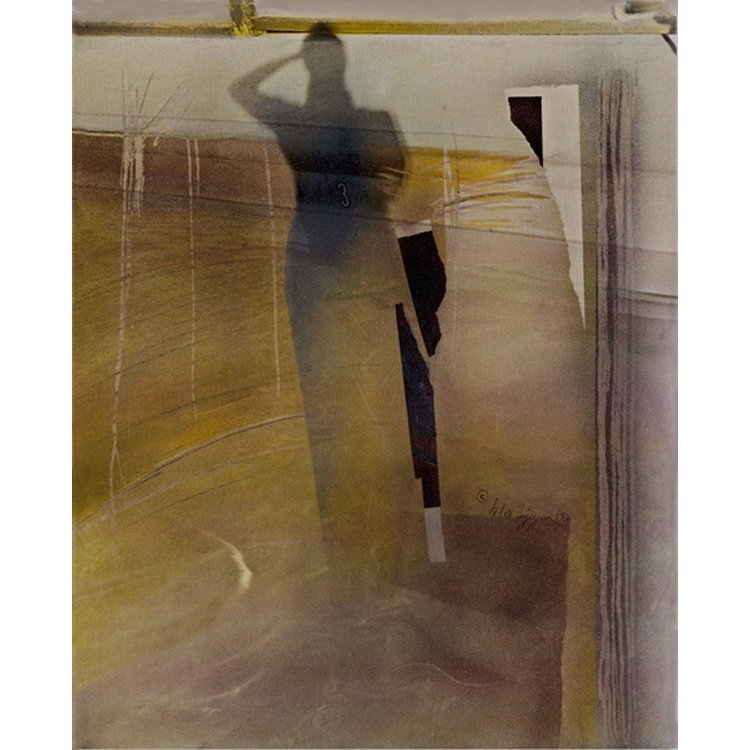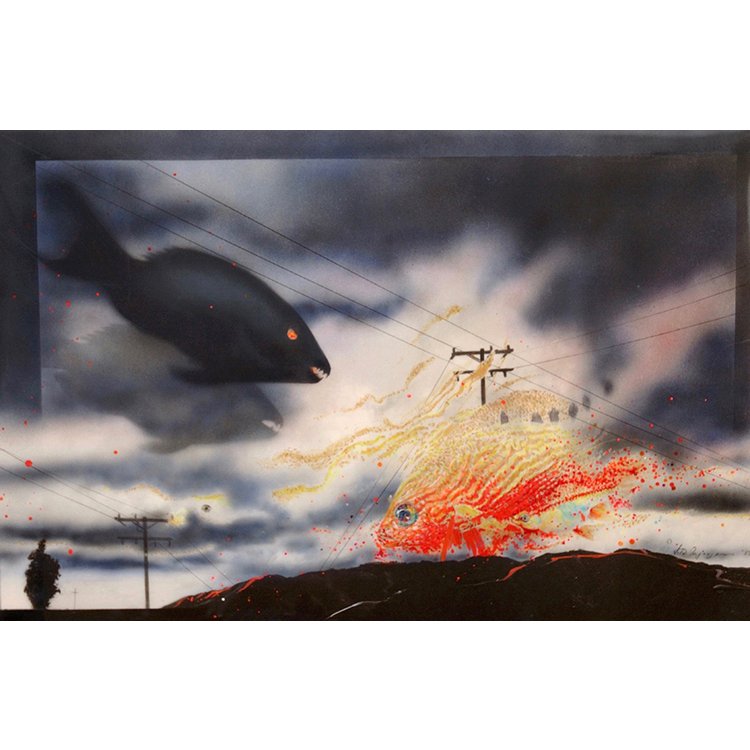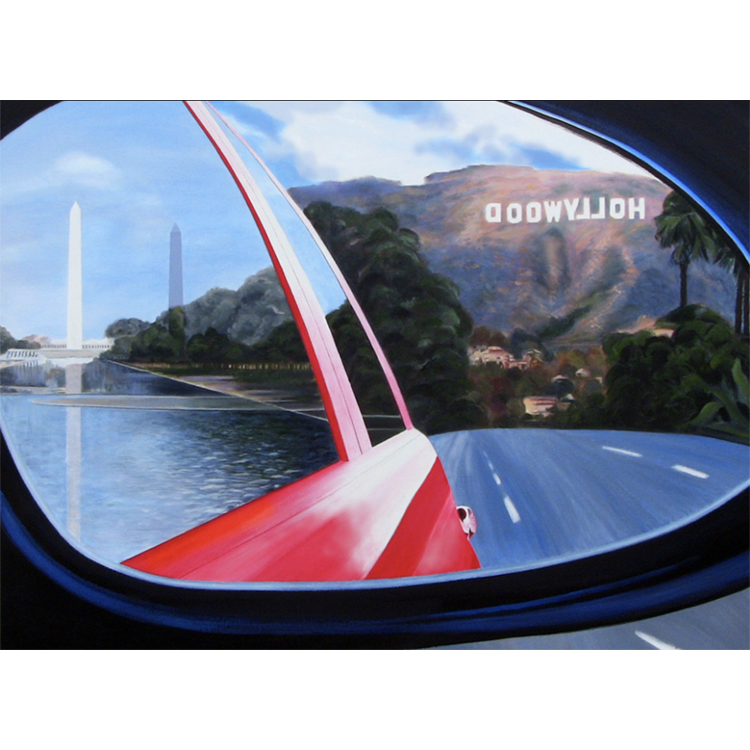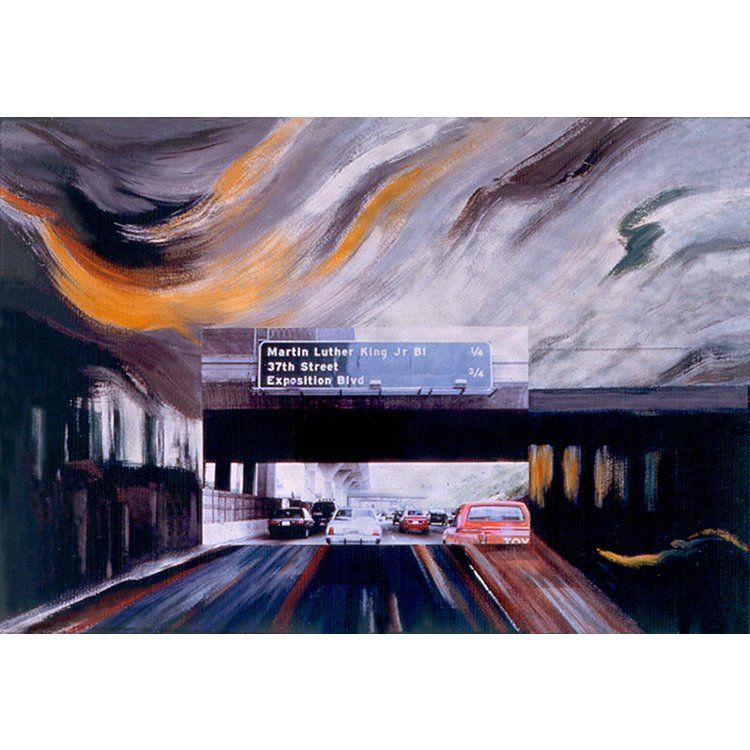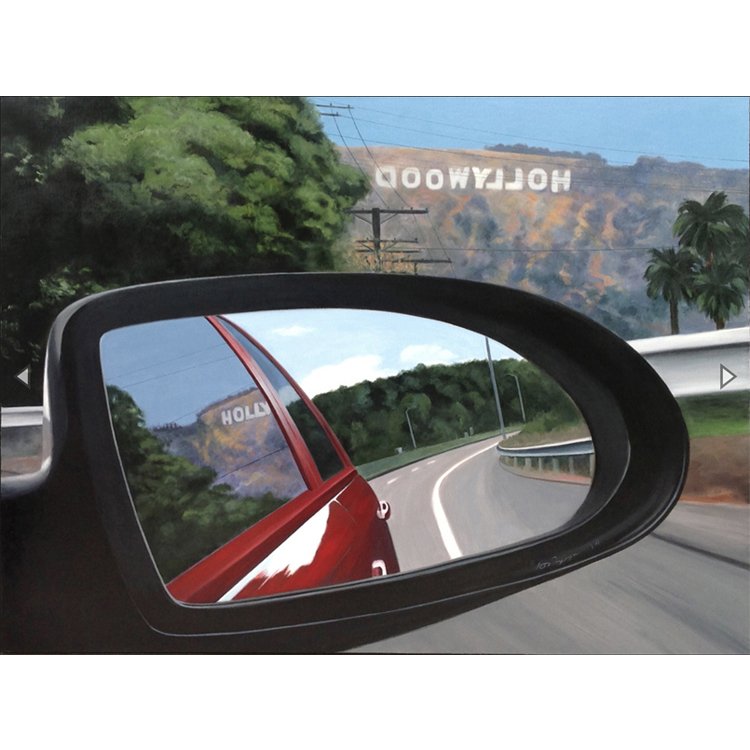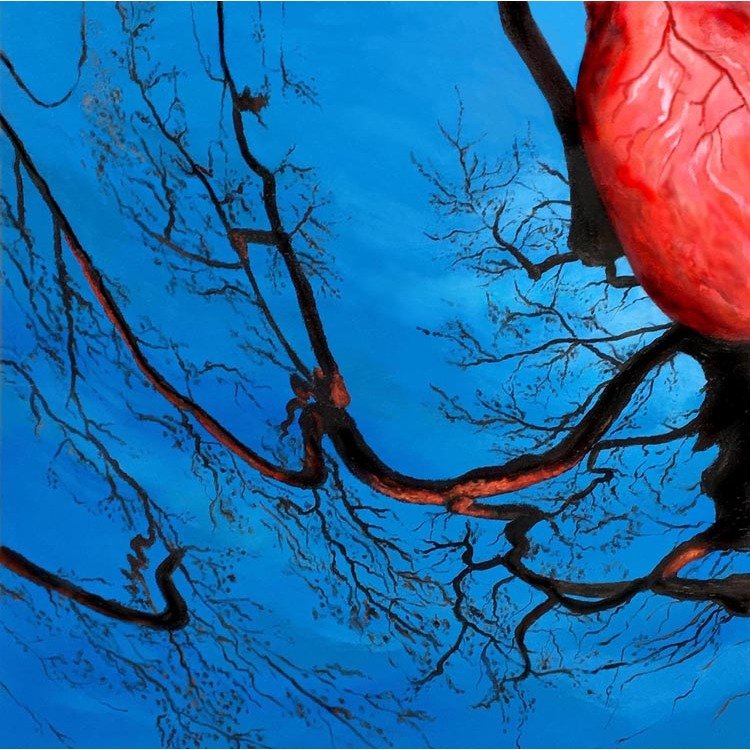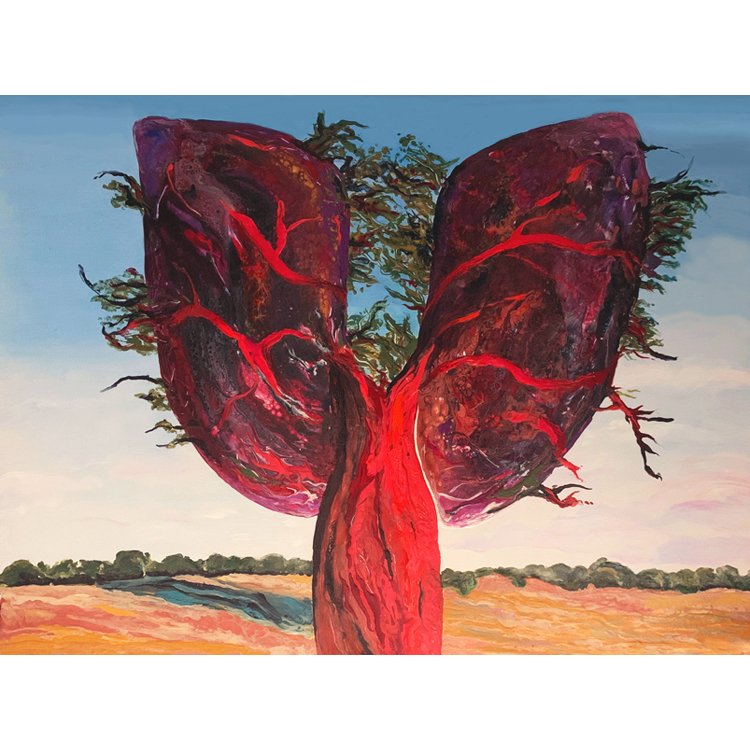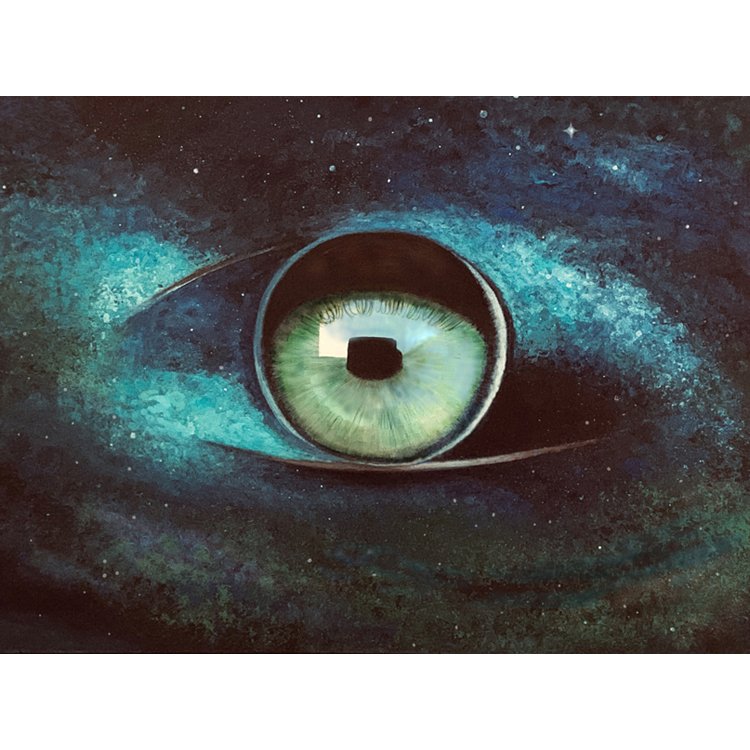The Marvelous Icons of Seta Injeyan
Joey Krebs
Like female antecedents Frida Kahlo, Louise Bourgeoise and Marissa Merz, it is Seta Injeyan’s visionary and expressive work which continues the great traditions of fine artists who have elicited an intimate link between the freeing of one’s psyche as imagination and rational mind, to liberating one’s thoughts from repressive societal structures. Depicting metaphysical reflections and daydreams as a revolutionary palette, Injeyan blends together stark visions of day-to-day realities with soft imageries and iconic motifs where, through the spirit of play, the Artist of Diversity liberates the doldrums of routine by opening corridors onto the second world, faithfully integrating today’s dystopic simulacra and its hyper-reality.
Seta Injeyan was born in Aleppo, Syria where she was nurtured in a loving home in which both the Armenian and European cultures were notably present. Yet, the most important elements were missing from her life: there was little art education, no art galleries, and no art museums. The local Syrian landscape was essentially a desert, with few green bushes or trees. This would ultimately bring her to America to attend the Pasadena Art Center College of Design.
At Dusk 14x11 Gouache on film
After graduating from Art Center, she was encouraged by the language of her dreams and began in the late 1970s to use her camera as an art instrument. As her medium, she created paintings using large transparencies, otherwise known as positive film. Gradually her work began to take on a new form: employing medium, with new techniques, vis-a-vis a recurring theme that began to take shape from our world of appearances. What resonate throughout her body of work are revelations of dark shadowy silhouettes, telephone towers, ladders set in water, sea creatures, doors and entries, and the prominently-featured, four-squared Dream Fish which symbolizes her birth-passage to intellectual freedom and an underlying motion to completeness. Such dreams are innately suffused with the teachings of our ancestors and schools of Alchemy and Gnosticism; along with images from time immemorial presented to our collective unconscious, as noted in studies by C. G. Jung and others. [1]
Upcoming Eclipse of the Sun 21x32 Mixed Media on Transparency
In the course of her inner journey, Injeyan developed a genre she describes as Perspective Surrealism, an early 21st century art form that builds on the work of its 20th century forebears. Perspective Surrealism rouses the conscious and unconscious mind and demands an examination of multiple rational perspectives, simultaneously in a single painting. Like Surrealist artists Dorothea Tanning, Leonora Carrington, Remedio Varos, and Frida Kahlo (although Kahlo rejected the Surrealist label), Injeyan has used her skill as a painter to create powerful illusions that employ irrational juxtapositions to disrupt imposed norms and achieve psychic liberation.
While Injeyan’s juxtaposed perspectives feel unnaturally combined, each painting is a symbolic composite that resonates with a unified voice. Her Perspective Surrealist paintings are visual poetry that aim to release the creative potential in us all. Indeed, they implore us to search our dreams and niches of our mind’s eye for a gratifying resolution.
Shooting for the Stars 36x48 Acrylic on Canvas
Perspective Surrealism has taken Injeyan into increasingly abstract compositions. She not only explores multiple perspectives of our external world, but she also examines the internal universe of humanity – its heart and soul. With her most recent series, Organic Flows, she juxtaposes the physical beauty of our most important organs – such as the heart, brain, and liver – with contemplations of their power within our internal universe. Presented in the following is a sequence of works describing Injeyan’s development of Perspective Surrealism.
The Tree is the Heart 30x40 Acrylic on Canvas
Doors and Entries Series: Doors and entries have for years fascinated Injeyan through their mise-en-scène symbolism. In writings supported by her journals, she states, “The door or entry is a powerful image for me. It’s an object easily taken for granted in our home or workplace. But it also symbolizes a threshold, or passage from one state or condition to another. The door has been a constant theme throughout the extent of my painting career.” [2] Indeed, the alchemist’s Introitus Apertus (The Open Entrance) is the inner road that takes us to ourselves.
Ascent 30x40 Acrylic on Canvas
Dynamo Road and Road to the Sky Series: The doors and entries above lead to the open road, which symbolizes a process by which Injeyan seeks personal realignment. In these works, the picture frame is simultaneously a focusing device that limits one’s view through a fixed “frame of mind”; as well a means of establishing a dialogue between tangible reality and the inner world. “We rarely see the entire map,” the artist states. “More often we only experience the movement of energy via an infrastructure that connects points of civilization, and which invades nature.” [3]
Peace & Fire Overpass 25.5x40 Acrylic and Collage on Paper
Nanopresent Series: The slice of time that one calls the present is experienced only as a transition. Injeyan’s Nanopresent Series uses the reflections seen in car mirrors as a device by which to dwell on the moment of leaving the past and entering the future. All departing images take one billionth of a second (a nanosecond) to traverse from mirror to eye, a distance of about one foot. This interval mediates the past as one moves into the future. [4]
Also, Injeyan employs reflections in the Nanopresent Series to show dualities of realism and illusion. For example, in images centered about the Hollywood sign, the letters of the sign are backwards to the depicted reality, but appear correctly in a car’s rear-view mirror. This speaks to illusions that have assumed a parallel reality to our lives; the inversion signifies that Hollywood, which already began as an inversion, is now projected as a reality into our minds.
Choosing Your Illusions 36x48 Acrylic on Canvas
Heart and Soul Series: Quite of itself, and following the ancient adage, “That which is inner is outer,” Injeyan’s work on roads has led her to perceive freeways and roads as the geographical arteries of modern life, while also celebrating the human body’s inner roads of arteries, veins, and their magnificent pump, the heart. This organ, says the artist, “is replete with poetic and spiritual significance, constellating myriads of symbols. It is the core, the giver of life, nature’s pulse, the cosmic undulation that, in the end, regulates a much larger body of man and the Universe by its renewing autonomic flow of energized blood and libido.” [5]
Heartfelt Prayer 30x30 Acrylic on Canvas
Organic Flow Series: Like the Heart and Soul Series, this series is also a natural outgrowth of the road paintings, whereby freeways and roads, as the geographical arteries of modern life, have merely reflected the workings of our internal organs, including the heart, lungs, brain, liver, kidneys, et al. In terms of composition, Injeyan started out with the macrocosm of concrete-and-
Inspiration 18x24 Acrylic on wood panel
steel routes and arrived at the microcosm of inner routes. She explores and celebrates our human organs and finds connections with Nature. For example, the human lung as a breathing tree: inhaling O2 and releasing CO2; complementing nature’s tree that inhales CO2 and releases O2. Just as Injeyan was led to consider similarities between the human organs and objects in nature she was also inspired by for example, the affinity between, the human eye and newly-detected cosmological objects, such as black holes, that are governed by intense gravity and the four dimensions of space and time. [6] The pupil of our eye appears black because practically all light passing through it is absorbed by the retina. Analogously, a black hole absorbs all impinging matter, including light (photons), due to its enormous gravitational field. Other terrestrial and extra-terrestrial comparisons are forthcoming in a developing imagery of Art and Science.
Galactic Vision 30x40 Acrylic on Canvas
To quote from Mat Gleason’s review of Injeyan’s Organic Flows exhibition: “The effect of Injeyan’s paintings are simple, yet epic. They transform by expanding the imagination of the viewer. There is a small change in each gallery visitor. None will ever look at the subtle shapes of nature and those of biology in the same way. Unified in an unreal combination on the surface of a painting, the absorption of Injeyan’s visual poetry elevates the consciousness of the viewer. This is powerful magic in a universe that seems more each day designed to limit our conceptual options in order to sell us something. There is no preaching, politicking or peddling going on in Injeyan’s painting. There is but artistry in the service of the rationally absurd, and that in and of itself, is quite a triumph.” [7]
Seta Injeyan has successfully created an inner cosmological language sourced from the heirs of post-surrealist artists and her private iconography of dreams of over 40 years. Her artwork has been selected by many curators and exhibits, as well as reviewed by highly-renowned critics. She is a Los Angeles-based artist and a notable Art Center College of Design Graduate, mentored by artists such as Richard Diebenkorn.
As massive objects like black holes can bend time and space to connect otherwise distinct points, let us leave the last word on Injeyan’s work to the ‘Pope of Surrealism’ André Breton, who wrote in 1924: “The marvelous is always beautiful. Anything marvelous is beautiful, in fact only the marvelous is beautiful.” [8]
References
[1] C. G. Jung, Psychology and Alchemy, Bollingen Series XX (Pantheon, New York, NY 1953).
[2] Seta Injeyan, Personal Journal (2004).
[3] Seta Injeyan, The Icons of Seta Injeyan (2006).
[4] Injeyan coined the word “nanopresent” in 2012. Her usage is distinct from that of later writers such as Meta-Nomad Justin Murphy, who defined the word in The Battle Against the Hyperpresent (2020) as “The increasing slicing up of time into smaller and smaller pieces.”
[5] Seta Injeyan, The Icons of Seta Injeyan (2006).
[6] K. S. Thorne, Black Holes and Time Warps (W. W. Norton, New York, 1994).
[7] See: https://setainjeyan.com/organic_flows/mat-gleason-review/
[8] André Breton, “First Manifesto of Surrealism”, in Art in Theory 1900-1990: An Anthology of Changing Ideas (Eds. C. Harrison and P. Woods, Oxford: Blackwell Publishers, 1992) pp. 87-88.
